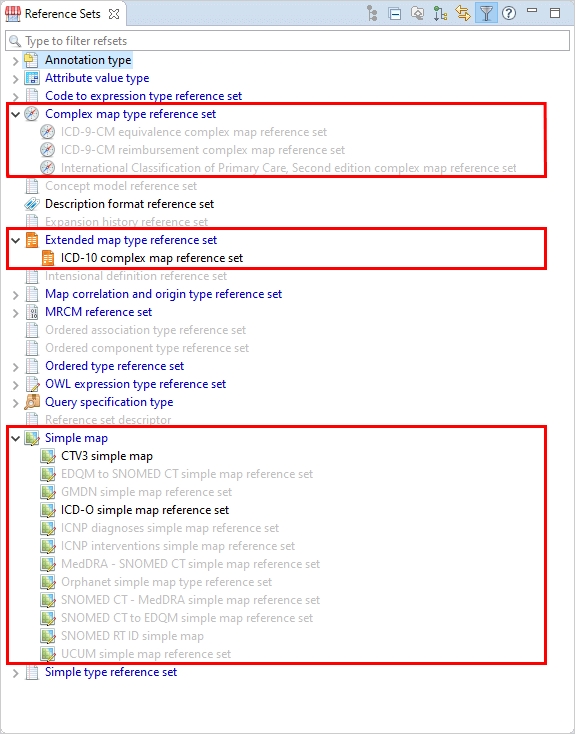Map type Reference Sets
Maps can be created in form of different types of Map type Reference Sets. When you are defining a map, you are linking components from one terminology (as the source) to components with similar meaning from another terminology (which would be called the mapping target). Map type Reference Sets represent cross-links between terminologies.
Map type Reference Sets are a SNOMED CT standard mapping SNOMED as the source to a specified target terminology.
Simple Maps represent one-to-one relationships.
Complex Maps and Extended Maps allow mappings from SNOMED CT to multiple codes in the target scheme and defining rules. These maps can be exported in RF2 format.
Snow Owl provides a variety of mapping methods for creating association mappings between different terminologies or external codes, Code Systems.
Simple, Complex, and Extended Map type Reference Sets are organized in the Reference Set View and can be opened by double-clicking.

The editor is used to filter, review or make changes to the mappings (e.g. add members, inactivate members). The user interface of the editor changes, depending on the type of map.
Map type Reference Sets
 Simple Map type Reference Set
Simple Map type Reference Set Simple Map type with Description Reference Set
Simple Map type with Description Reference Set Complex Map type Reference Set
Complex Map type Reference Set Complex Map Extended with Map Block type Reference Set
Complex Map Extended with Map Block type Reference Set Extended Map type Reference Set
Extended Map type Reference Set
Updating Map Target
Although SNOMED CT and its RF2 serialization format do not specify a formal map target type, Snow Owl allows the map target component type to be specified for new or imported Map type Reference Sets. To set the map target component type for Reference Sets right-click on the Reference Set and select the ![]() Update map target component type... Context Menu option.
Update map target component type... Context Menu option.